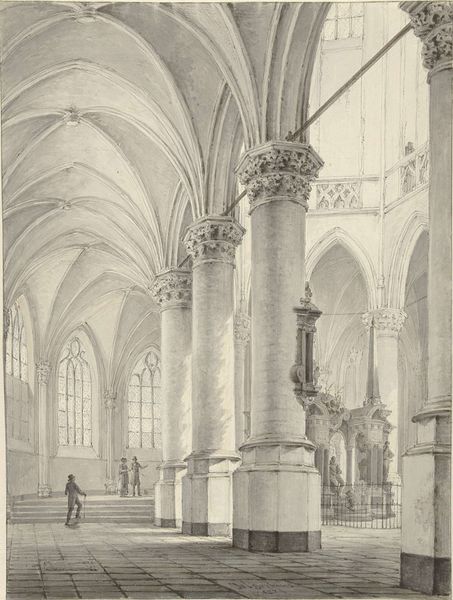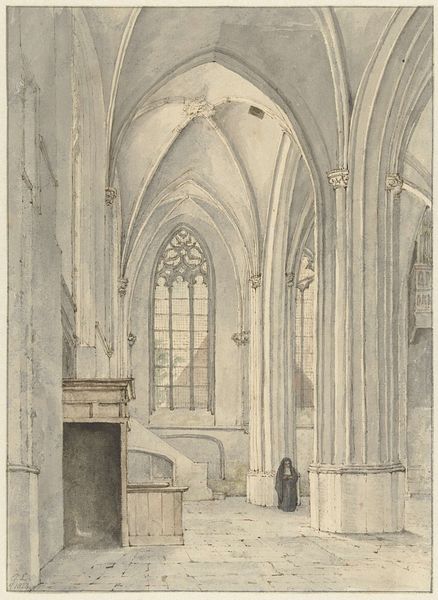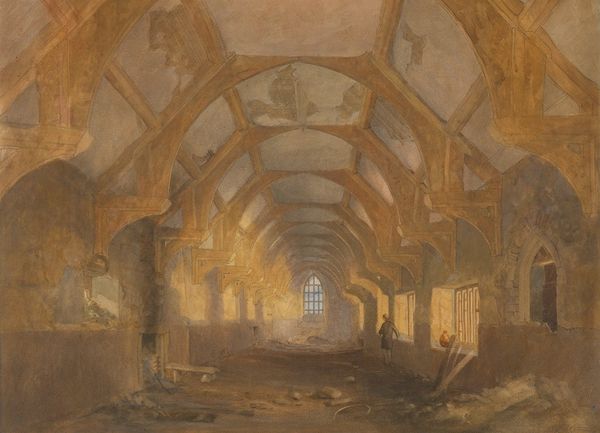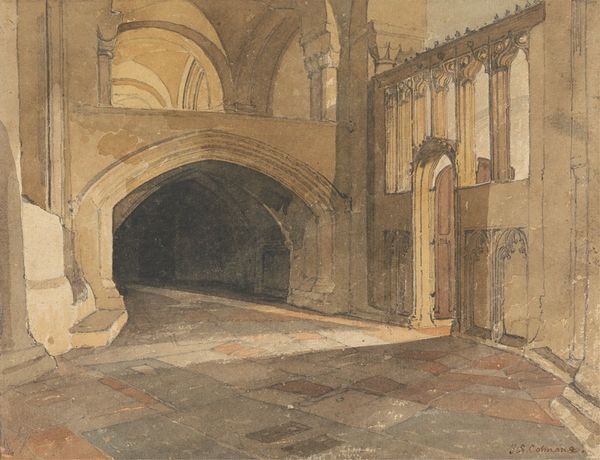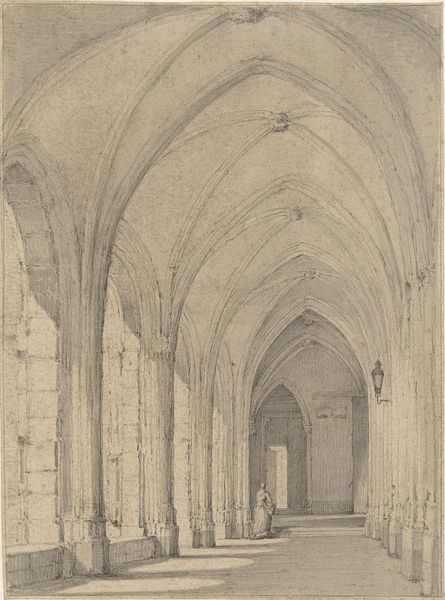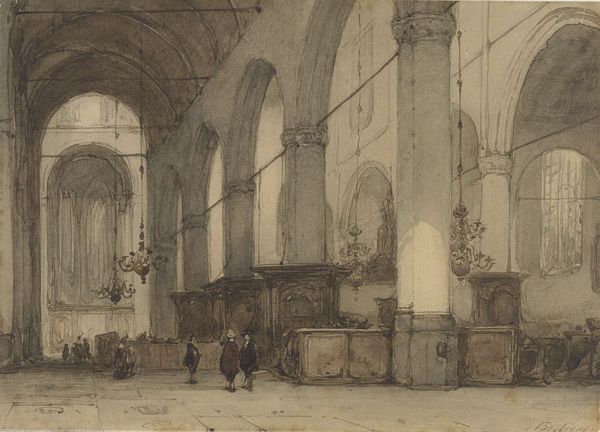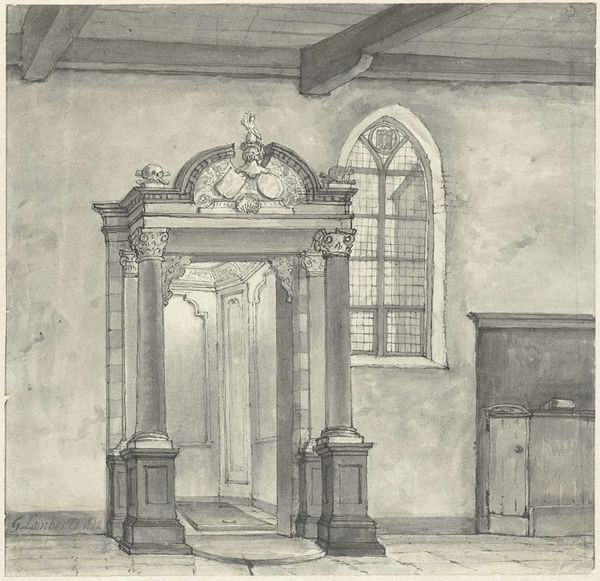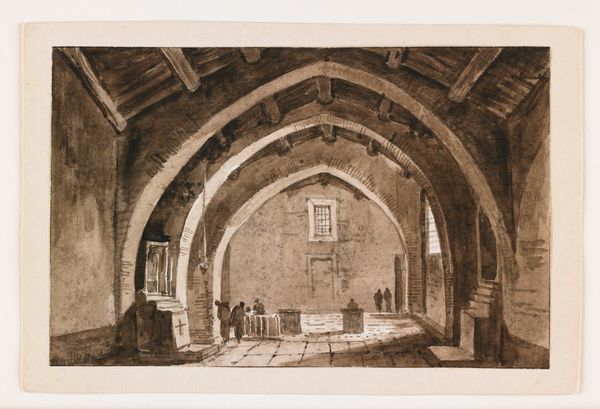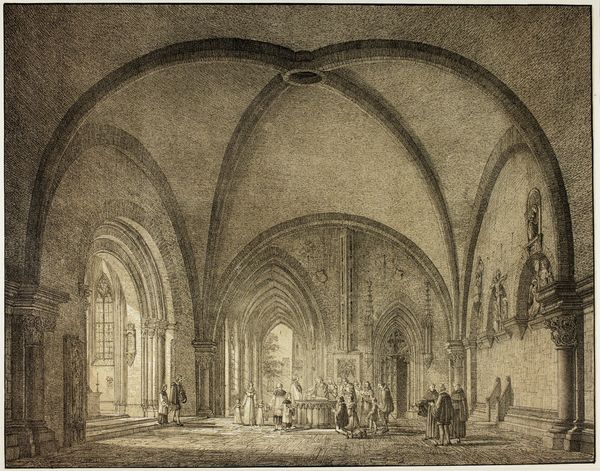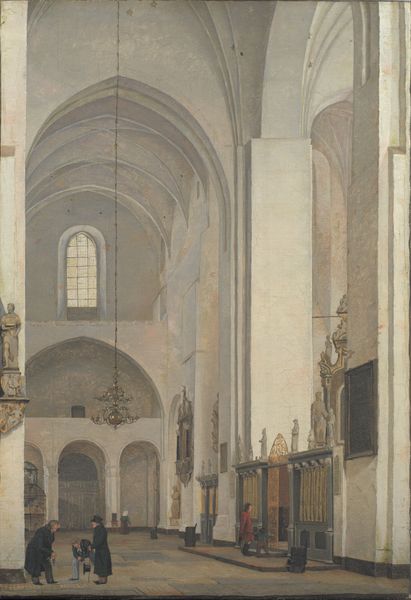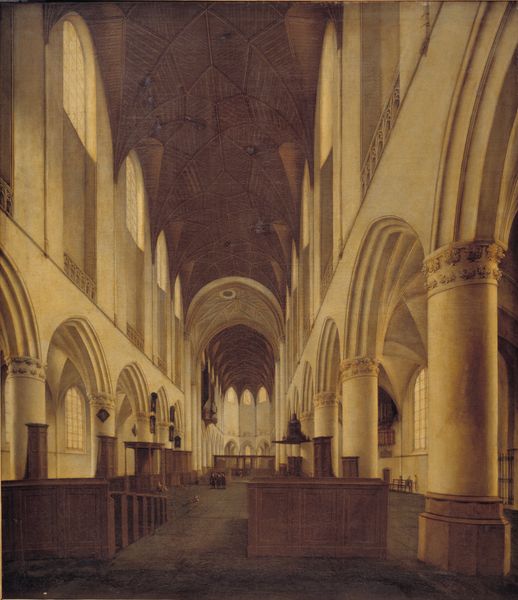
drawing, watercolor
#
drawing
#
landscape
#
charcoal drawing
#
oil painting
#
watercolor
#
romanticism
Dimensions: 19.5 x 36 cm
Copyright: Public domain
Editor: So, here we have William Bouguereau's "Church Interior," from 1831. It appears to be watercolor and maybe charcoal drawing. There’s such a beautiful sense of space, almost overwhelming, created with a really muted palette. How do you interpret this work from a formal perspective? Curator: The architectural rendering commands immediate attention through its perspectival accuracy and delicate gradations of light. The rhythm of the arches, for instance, provides a structured sequence for the eye to follow, creating both depth and balance. How does the play of light and shadow strike you? Editor: I’d say that it enhances the moodiness, a sombre stillness. It definitely contributes to a spiritual aura, though that may also just be from it being a church. The colours are so restricted, pale greys, blues and reds. Curator: Exactly. Notice the geometric composition, which underpins the drawing’s overall structure. The use of linear perspective is crucial here, drawing the viewer's eye towards a vanishing point at the end of the central nave. The architectural details—the ribs of the vaulting, the tracery of the windows—how do they contribute to your reading? Editor: I think those repetitive forms help emphasise scale, with the smaller windows drawing our eyes to the back, exaggerating how deep and large this structure actually is. But by analysing these details, is there any sense of place or experience we are able to construct, beyond the aesthetics of space and form? Curator: I believe so, yes. By looking at just composition, perspective and colour values, one can extrapolate the grandeur intended by its design alone. It's in the interplay of line and light that we glimpse the essence. Editor: I appreciate seeing how the purely visual aspects speak so profoundly about artistic intent.
Comments
No comments
Be the first to comment and join the conversation on the ultimate creative platform.
